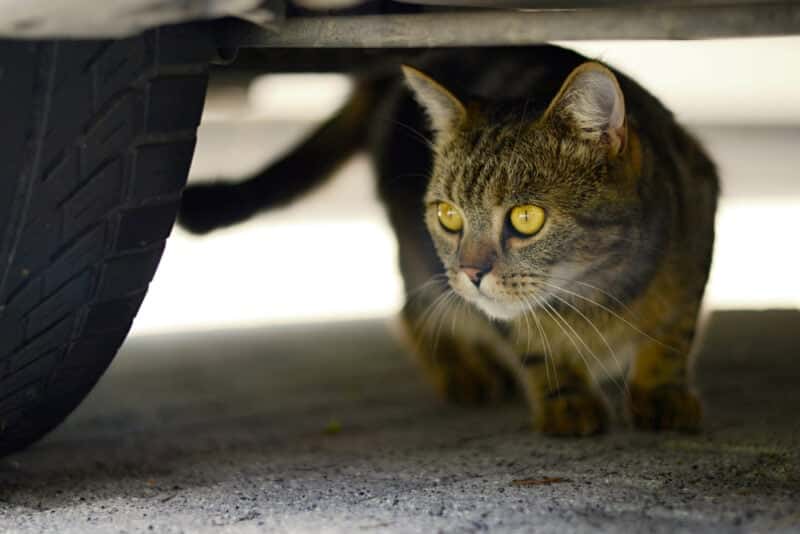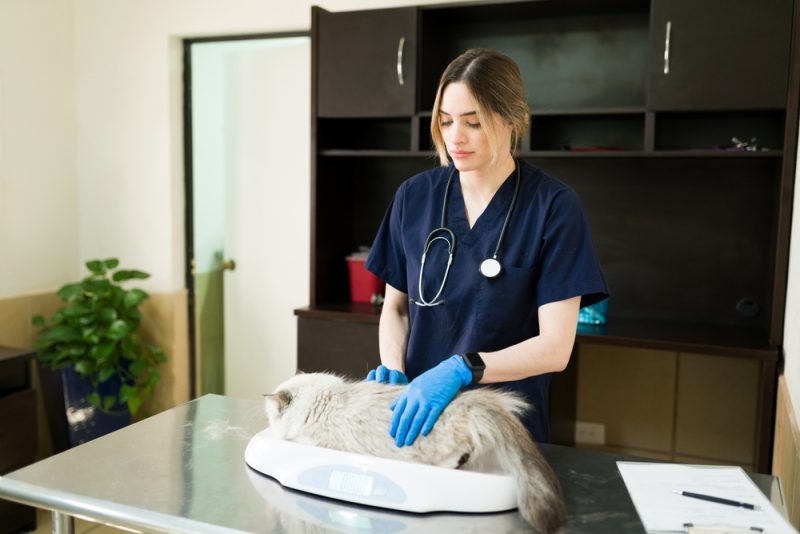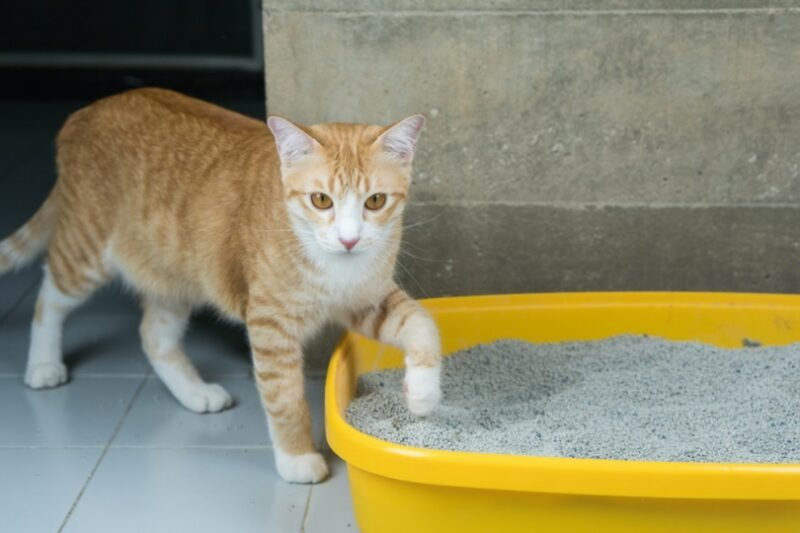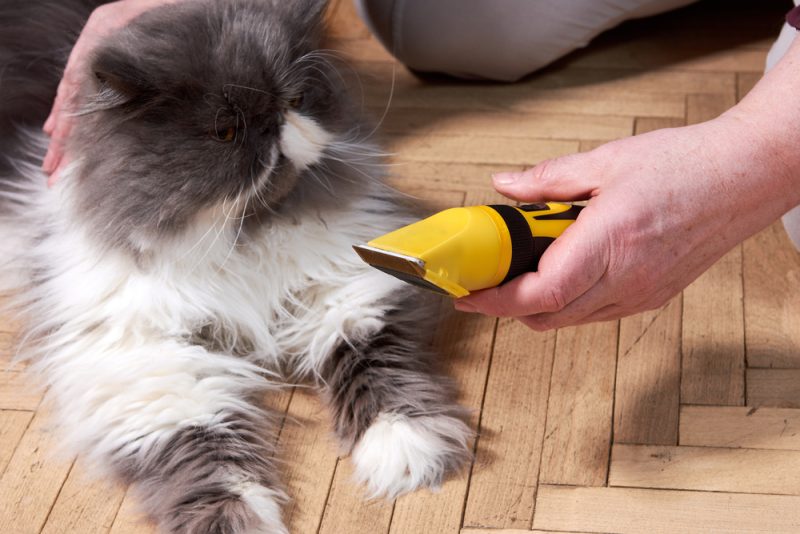Cats are notoriously good at hiding. If you’ve owned a cat, or currently have a feline in your home, you may have lost track of them from time to time only to discover they’ve been in the strangest of places. This can be a bit scary for cat owners, but it is something cats may do from time to time.
Unfortunately, when cats are outdoors, certain hiding places aren’t ideal for their safety. One such place is underneath the car. Cars present a high level of danger when it comes to pets. If you’re unaware of a kitty underneath you can accidentally injure them or potentially kill them when you move. Kitties, especially strays, tend to climb into cars in hopes of warming themselves on the engines when the weather is cold outside. This can be extremely dangerous.
To protect your cat when they explore outdoors, and other kitties in the area, let’s learn a few tips on how to get a cat out from under a car when they are hiding. These tips will help you keep any cat that chooses your car as a hiding spot safe.

The 7 Tips to Get a Cat Out From Under a Car
1. Call the Kitty
More often than not, a simple call from you may convince your kitty to come out from under the car. However, if something has scared your cat or you’re dealing with a stray, this may not be that easy. Try to show your cat, or the cat in question, that you are not a threat. Speak to them in a calm voice, don’t get upset if they don’t listen, and give them time to react. If calling doesn’t work, it’s time to move on to other methods.
2. Cats Love Food
Food needs to be at the top of our list of ways to get cats out from under cars simply because most cats don’t mind free food. This method is especially helpful when dealing with relatively friendly strays. You never know when a stray cat has had a meal last. If you find one under your car, one of the quickest ways to coax them out is with food. Often they will rush out in hopes of having a nice snack. Unfortunately, if the cat is severely frightened, even food may not work.
When it comes to your pet cat, your well-fed kitty may not be hungry, but using special foods (such as their favorite treat ) usually brings them running. You know your cat better than anyone. If you try the food as a way to convince them to leave their hiding place, make sure it’s a treat they can’t resist.

3. Catnip or Other Favorable Scents
Most cats respond to catnip. If you can’t seem to get a cat to leave the safety of the underside of your car, a little catnip could do the trick. Keep in mind, not every cat has a response to catnip, so they may not react to it. Other cats may not respond favorably to catnip.
Valerian root is an alternative you can try to lure out a cat from under a cat. Anecdotally, olives tend to mimic catnip in terms of their smell (for a cat) and might do the trick. However, you shouldn’t allow your cat to eat olives as they aren’t healthy for them.
For situations where it’s your cat under the car, you can even bring their favorite blanket or their cat bed outside and leave it near the car to coax them out. Remember, when dealing with strays or feral cats, they may be fearful of you. Try to leave the smelly item near the car so they can catch the scent, but stay back enough not to provoke their fear.
4. Use Toys
While we think it’s cute to watch a cat play with toy mice and feathers on sticks, in their mind, they are attacking prey. Yes, even domesticated cats have a prey drive like their ancestors. They simply do not get the chance to act on it as often.
If your kitty, or a neighborhood cat, is under the car, activating that prey drive may get them on the move. Use a lure-type toy that you can shake or wiggle. Let the kitty see the toy. Hopefully, this will entice them to watch the action. Once they are on target with the toy, slowly step back.
Most cats will want to chase the wiggling toy in hopes of catching it. This need to attack may save the kitty from the dangers of being underneath the vehicle.

5. Herding
Do not attempt this on a very frightful cat, as they might lash out at you (even if they are a pet used to human interaction).
If other means of removing a cat from beneath the car are not working, you may have to herd the cat out. When doing this, you will need to physically get on the ground and use your arm, if the cat is close enough, and urge the cat to get moving.
If they are too far under, you may need assistance from an item around the house. You will need something long enough to reach the cat but nothing that could hurt them. Lightly tap the kitty to herd them along. Be prepared, however. If the cat is frightened, it could attack your arm or the item you use to attempt the rescue.
6. The Water Method
Most cats aren’t fans of water. They especially aren’t fans of water in spray bottles. When all other methods seem to be failing, grab yourself a clean spray bottle and fill it with water. Then go to the car and give the kitty a slight spray on the behind. The sound of the water spraying, the water touching them, and a cat’s dislike for all things sudden will most likely get them rushing out from under the car.
Remember, however, never use any chemicals in the bottle or a bottle that has held chemicals as this could be dangerous to the kitty. All you want is clean, fresh water. Also, never spray the cat in the face. This could disorient it and make it unwilling to move or cause it to rush off into a more dangerous situation.
This method should be considered one of your last resorts, as the cat is highly likely to not appreciate this. However, in some circumstances, it must be done for their safety.
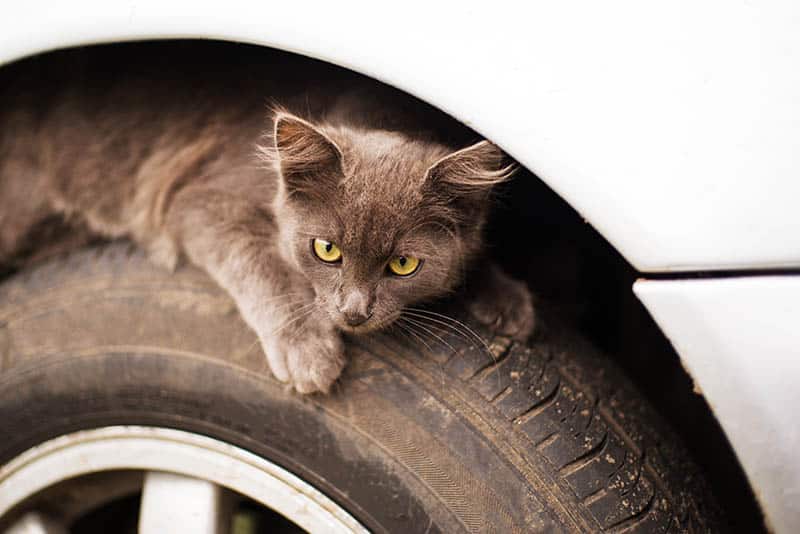
7. The Scare Tactic (A Last Resort)
If all else has failed and the cat is still under your car, it may be necessary to scare them out from under there. While there are several ways to do this, such as loud sounds and objects, the cat’s safety should be the most important thing. The last thing you want is for your cat, or any cat for that matter, to rush off into traffic when they run or get hurt in some other fashion.
If you decide to use this tactic, make sure potential exits are closed to the cat so you can control where they come out. You can place a crate at the exit point for stray cats, or perhaps have a family member waiting if it’s your pet. Take note though that a startled cat will most likely bite or scratch if immediately picked up by a person, including a family member.
Once everything is in place and you are prepared for the cat to run out safely, make the noise. The best scenario is that this will make the cat rush out instantly. If not, you may need to repeat the sound. Unfortunately, being scared could be the reason the cat is under the car in the first place so please do not go overboard and give the kitty more reasons to be stressed.

Conclusion
As you can see, there are several tips you can implement to help get a cat out from under a car. Unfortunately, not all of these measures are ideal for the cat and can easily cause more stress. If you find your pet cat, or a stray cat, underneath your cat, start slowly. Try to coax the cat out using some of the methods mentioned above. If that doesn’t work, you may need to use more drastic measures to ensure the cat is not injured when the vehicle starts.
As always, try to keep the situation as calm as possible so the already stressed kitty doesn’t suffer more emotional turmoil. The cat’s safety should always be the top priority.
See Also:
- How to Get a Cat Out of the Garage (10 Effective Tips)
- Cats on Cars in Cold Weather: Vet-Reviewed Facts and Safety Guide
Featured Image Credit: czechphotos, Shutterstock
